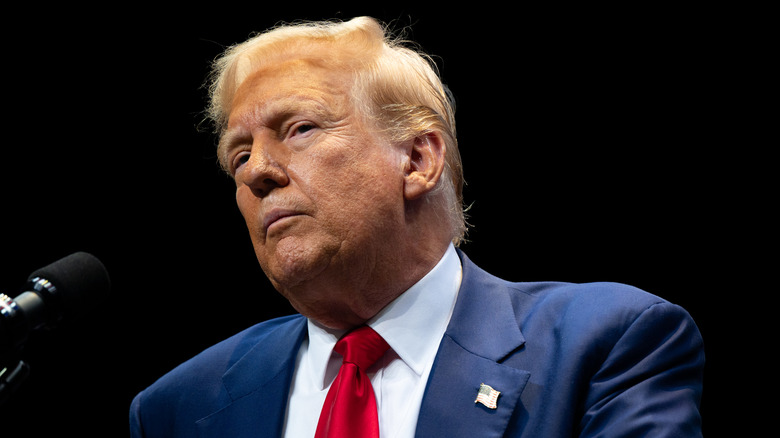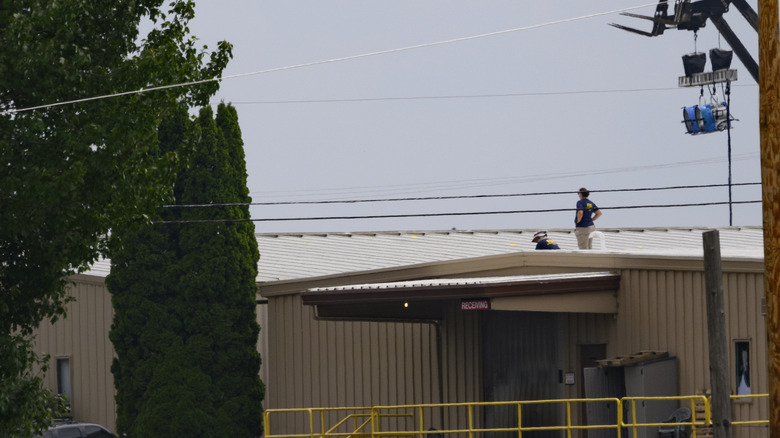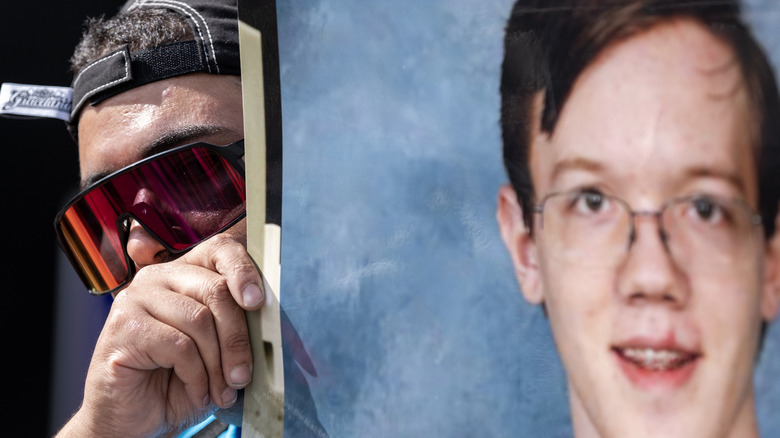Details From The First Donald Trump Assassination Attempt Hearing That Don't Make Sense
When 20-year-old Thomas Matthew Crooks opened fire at Donald Trump amid his Butler, Pennsylvania rally in July 2024, it marked the end of his short life. The former president survived, and in the wake of the attack, many wondered how Crooks was able to climb onto a roof with an AR-15 rifle so close to his target. In the following weeks, reporting revealed multiple security failures at the event and many things that just didn't make sense about the incident or Trump's would-be assassin.
A bipartisan House of Representatives task force later convened to investigate the incident. One member, Louisiana Rep. Clay Higgins, took aim at the FBI for releasing Crooks' body for cremation 10 days after the attempt on Trump's life, suggesting it amounted to obstruction (the FBI refuted his claims and said everything was done according to standard procedure). On September 26, 2024, the task force held its first hearing, and yet more details about the plot surfaced that don't seem to make sense.
Secret Service allegedly said it would 'take care of' the roof
Thomas Matthew Crooks stationed himself on a roof about 150 yards from Trump. It was unguarded by law enforcement or Secret Service agents. The agency reportedly identified the building as a potential security vulnerability before the rally and left it in the hands of local law enforcement. After the assassination attempt, Secret Service Director Kimberly told ABC News it relied on local authorities for multiple areas in its outer perimeter. Later reports suggested these officials told the agency that they didn't have the manpower to cover the building where Crooks positioned himself.
During the September hearing, Drew Blasko, an assistant team leader of the sniper unit within the Butler Township Emergency Services Unit, said he indeed asked the Secret Service for additional agents to be posted at the building ahead of the rally. In a new bit of information, he said they responded by saying they would "take care of it," CTV News reported. If the Secret Service assigned the building to local law enforcement, and these authorities then warned the agents ahead of time that there was not enough manpower to cover it, why was nothing done about the glaring security issue?
Local law enforcement didn't understand the communication network
As reported in the aftermath of the assassination attempt, multiple witnesses at the Butler rally saw Thomas Matthew Crooks on the roof before he fired at Donald Trump. They tried to warn Secret Service agents, but officials didn't respond, possibly because the would-be assassin was out of their line of sight. Local law enforcement also flagged Crooks as a possible threat and reportedly contacted the Secret Service with this information. Why agents didn't respond to these alerts was one of the many questions that lingered in the wake of the plot, and some light has been shed on the answer.
As reported by CNN, testimony at the September hearing revealed that local police officers sent multiple reports about Crooks on the roof through channels that should have made it to the Secret Service agents on Trump's detail — but didn't. The outlet said such intel went through various radios that all funneled through two communication posts. As reported by KTVZ, testimony from locals authorities painted a picture of a "convoluted" communication network that separated groups of officers from the Secret Service's channel.
This echoed the agency's own report released on September 20, 2024, which suggested some police officers were not aware of how to properly use the intricate network. "The failure of personnel to broadcast via radio the description of the assailant, or vital information received from local law enforcement regarding a suspicious individual on the roof of the AGR complex, to all federal personnel at the Butler site inhibited the collective awareness of all Secret Service personnel," it read. It's unclear why such a complicated network was used, and why officers were not properly trained on how to contact Secret Service officials — an egregious oversight for a rally for a former president.


